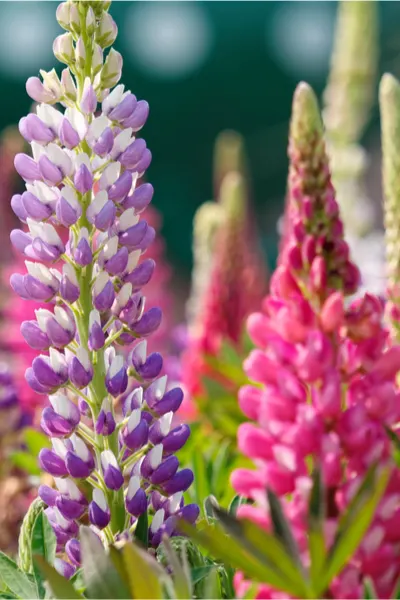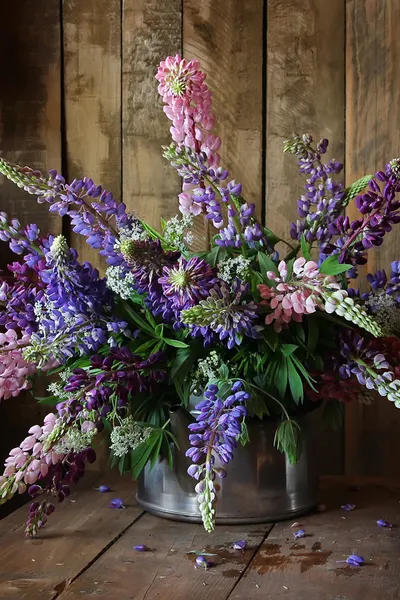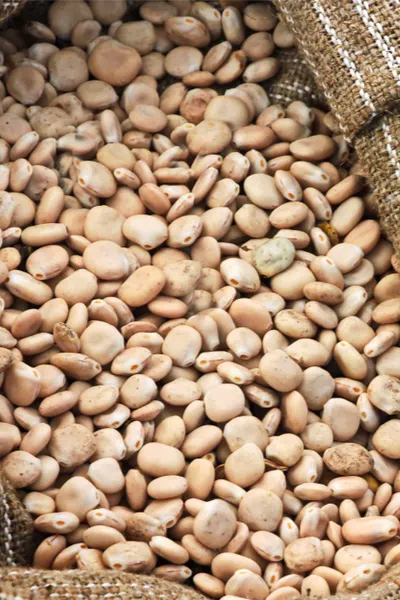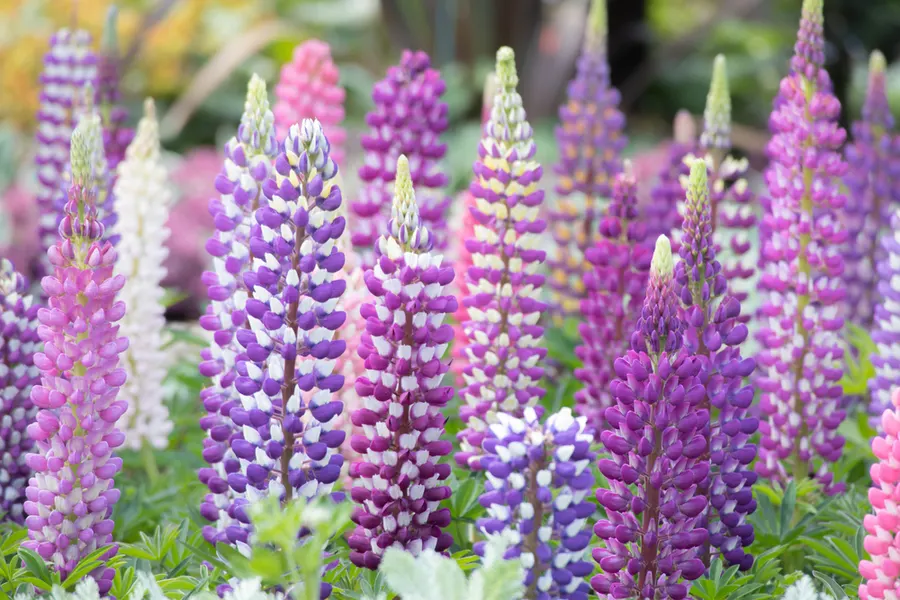Growing lupines in your perennial flowerbeds is an excellent way to provide interest and color, all while improving a beds overall soil quality too!
Although you wouldn’t know it by their gorgeous long blooms, lupines are a member of the pea family. And like other pea crops, they fix nitrogen levels in the soil as they grow.
Combine that with the long tap roots that lupines send below the surface to break up the soil, they can be quite the beneficial flower for growing in your flowerbeds.

But lupines offer so much more than just good flowerbed soil management. With blooms from late spring to summer, they can provide long-lasting color. And even better, they make an excellent flower for cutting too!
Here is a closer look at lupines, and how to grow them successfully in your landscape.
How To Grow Lupines
Lupines are a herbaceous perennial plant. Much like with growing hostas or daylilies, the foliage of lupine dies back completely to the ground each year, and new growth emerges each spring from the roots below.
Although they are considered a perennial, individual plants usually do not survive more than a few years. But because they are also incredibly productive self-seeders, new starts usually come up to keep the stock alive and well.

Lupines grow well and survive in growing zones 4 through 8. They are certainly lovers of the sun, and require at least 6 hours of sunlight for good blooming.
Although they can grow in many soil conditions, they prefer loose, well-draining soil. Lupines use a long tap root below the surface to draw nutrients. Because of this, the sandier the soil, the better the results.
Growing Lupines From Seed
Lupines grow best directly from seed. Although cuttings can be taken from the crown of existing plants in early spring, it can be difficult to get transplants to survive.

The seeds of lupines are quite tough, and soaking overnight before planting is a good to idea to help with germination. Seeds can go in the ground in late fall or early spring, as they handle overwintering well.
Of the two times for planting, fall is the ideal time. When the seeds are allowed to chill in the soil before it warms, (and winter certainly chills them!) they germinate at a higher rate.
Selecting The Right Variety – How To Grow Lupines
With lupine varieties available in a rainbow of colors and sizes, the sky is the limit when it comes to choices.
The classic Russell Variety Mix dates back to the early 1900’s, and continues to be a favorite choice. With bloom heights from 1′ to 3′ tall, the variety fits well into most bed spaces. It also provides a beautiful array of colors – from pink, white, blue and even purple. Additional Seed Source : Ed Hume Seeds – Russell Mix

There are also a full array of wildflower, mid-level and even dwarf varieties to choose from. But one thing is for sure, lupines are certainly worth the little effort they take to plant and maintain.
Here is to growing lupines in your flowerbeds, and improving the soil quality at the same time!
This Is My Garden is a website dedicated to spreading the love and knowledge of gardening around the world. We publish two new garden articles each week. This article may contain affiliate links.

